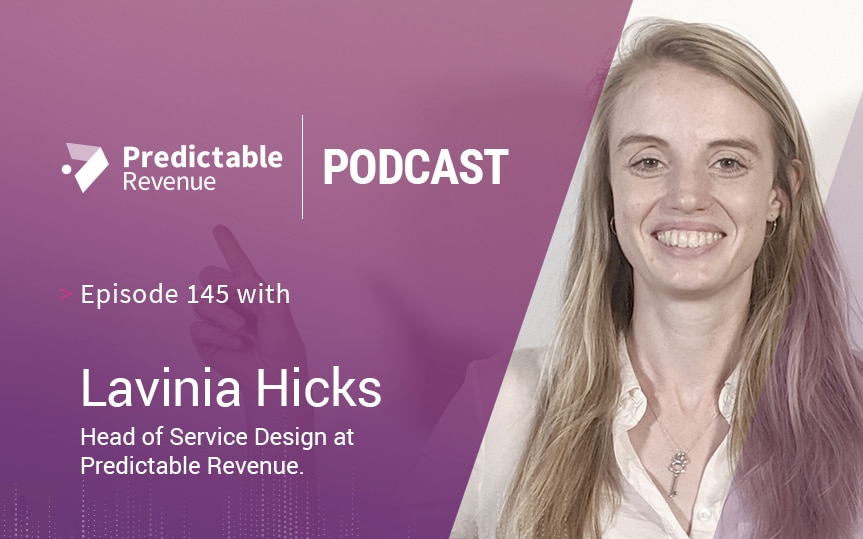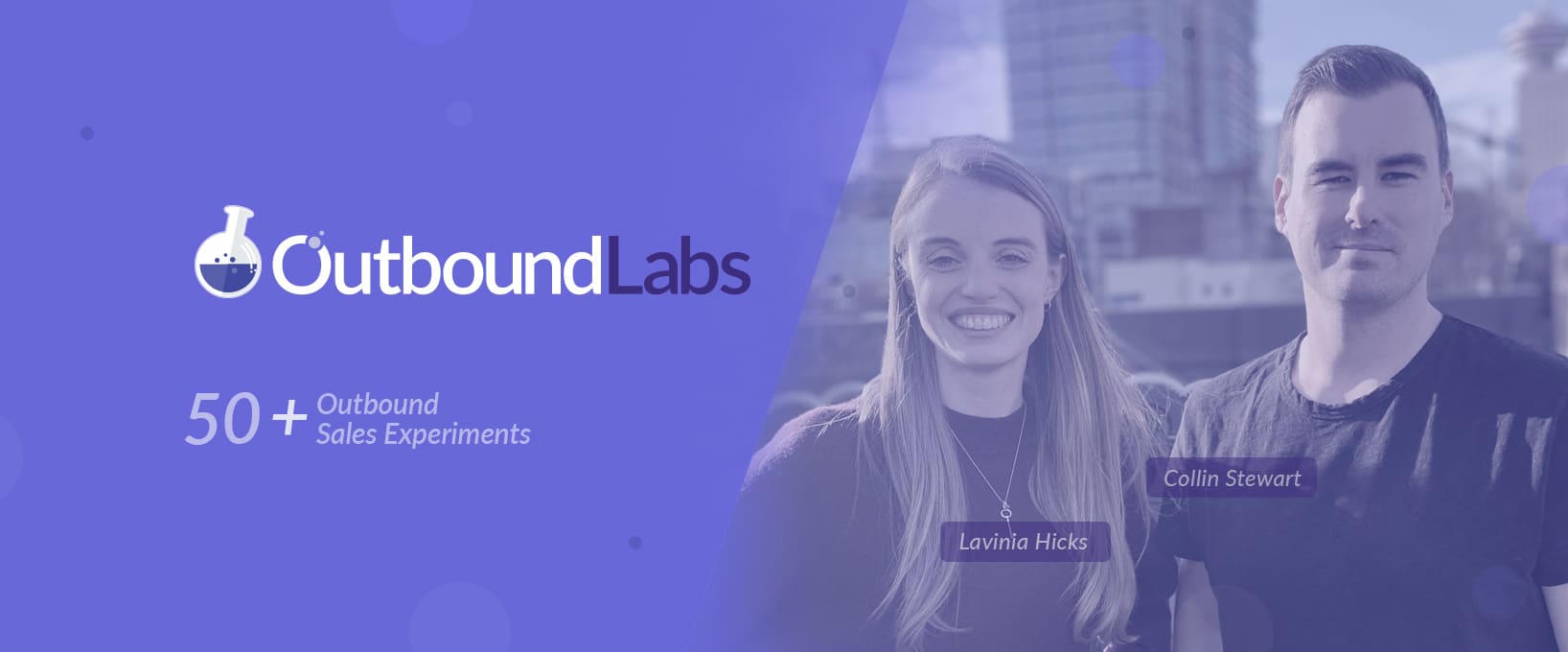Behind the Scenes of Outbound Labs

If there is one unshakable truth in outbound sales, it’s that the practice is constantly changing.
I’m sure you’ve felt it: you get a good cadence going, your messaging is spot on, and your prospects are responding. It’s awesome. Then, for some mysterious reason, that outreach starts to dwindle in its effectiveness.
And just like that, you’ve got to come up with something new and fresh.
It sounds easy enough – after all, it’s the job of your outbound team to make sure they are prospecting and selling in a way that resonates with their market. But, constantly evolving outbound outreach is challenging, time consuming, and requires some genuine thought and testing.
It’s easy to say you’re on the cutting edge – actually being there is a whole other thing. That’s precisely why we created Outbound Labs.
“Just over a year ago, we set out to harness all the creativity in our team to test new methods. We’ve always had lots of ideas, but we wanted to bring it all together and test everything. So we can stay ahead of the game,” says Hicks, on a recent edition of The Predictable Revenue Podcast.
Predictable Revenue used to be top down – Collin sharing ideas with the team for things to test and try out. But, it didn;t really work – we didn’t leverage the intelligence of the brains on the team. But, with OutboundLabs we are keeping things fresh. It’s been a huge success for us to test, innovate, and learn.
Watch the OutboundLabs Experiments!
What is Outbound Labs?
As mentioned up top, Outbound Labs is our internal practice that helps us test out new prospecting ideas and methods.
What we test is based on our internal “cycle” framework: a two-month window in which we decide on a topic (or topics) we want to focus on, and then action how we want to focus on those ideas.
For example, we have been through a number of cycles since Outbound Labs launched just over a year ago, and some of the topics we have focused on during cycles have been:
- Deliverability
- Increasing reply rates
- Optimize LinkedIn reply rates
(Editor’s note: you can check out our Outbound Labs video series, complete with numerous topics we’ve tested, here)
It’s important to note that you are always going to have more ideas than time to test them. And, when you launch something like Outbound Labs, your team is going to be excited. But, salespeople are busy, so make sure an experimental practice like Outbound Labs is designed in a way that is sustainable and can be kept up over time.
You can launch 20 experiments and not do them well, or launch 2 and be really confident in the results.
“When we first started this, everyone was super excited – we had 50 experiments right out of the gate. And we followed through on a bunch,” says Hicks.
But, after a couple of cycles, the excitement wears off. And, on top of that, people take on more than they can realistically pull off. So, make it sustainable. It can’t take too much time.
Watch the OutboundLabs Experiments
Trust the process
What’s the Outbound Labs process?
It’s simple, really. At the beginning of a two-month cycle, we host a lunch and learn (should take between 90 minutes and 2 hours) with the entire sales team to brainstorm ideas / topics that we’ll focus on for that cycle. This is pure brainstorming, with ideas written on sticky notes as far as the eye can see.
Once, we have brainstormed ideas, we inject the session with a critically important mental framework: design thinking. Simply put, design thinking is the process of empathizing with the prospect, or thinking from the perspective of the prospect.
For example, we ask questions such as: what are our prospects struggling with? How can we help them? How can we better understand the prospect? And then, we define a solution. For us, that might be how we can overcome the dreaded problem of being seen as spam, to name but one.
Once we have circled around a couple ideas from our brainstorming and design thinking session, we start to think about prototyping – how can we throw together a quick version of a particular experiment? What is the smallest test we can run to validate what we are trying to test?
Finally, we test. We make sure to have those on our team that feel particularly strong about an issue, or have come across it in their work, to be the ones testing it. If they have felt that particular pain, it only makes sense for them to be the ones to test it.
Experimental methodology
Another critical principle we apply to Outbound Labs is experimental methodology. This sounds super technical, but don’t fret, all experimental methodology really means is having a focus on controlling as many variables as possible, and only changing one for a particular test (the one variable you change is the one that brings the results you want).
So, within a campaign, you have a control group and a test group. The test group is the one where you change one of the variables. For example, we could have a list of positive responses, and we want to test whether calling or emailing those positive responses gets us a better chance at a booking.
So, we would test both and see where we net out.
Of course, not all of your experiments are going to work out. But, that’s the point of brainstorming and testing – some things work, and some don’t.
But, make sure, no matter the result of your test, that your team celebrates the process.
“Success in an Outbound Labs sense is running an experiment, and being comfortable with the results, and learning something. It is really crucial,” says Hicks.
Furthermore, make sure you acknowledge the limitations of your method when considering the results. Controlling and verifying is hard. Mistakes happen. And, of course, we’re dealing with humans.
As such, not every campaign is perfect, But, again, that’s okay. This is about learning, evolving, and growing – not perfection. If it were, then we’d all have figured out how to stay ahead in outbound by now, wouldn’t we?
For more on Hicks’ thoughts on Outbound Labs – including how to implement this with your team and some helpful resources to get in the right frame of mind – check out the rest of her interview on The Predictable Revenue Podcast.
NO TIME TO READ?
Listen On:



